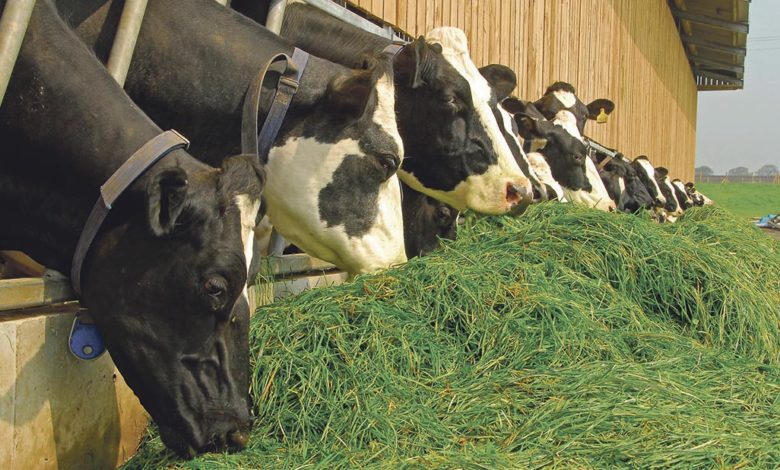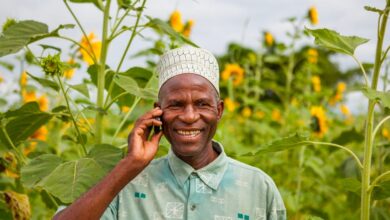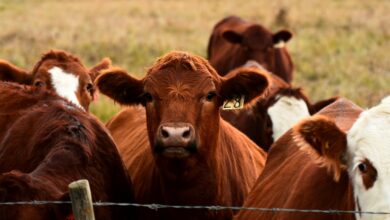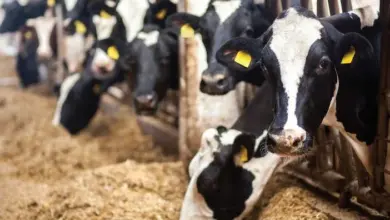
It is Tuesday morning, farmers are gathered at a cattle farm in Buhabwa, Murundi Sector, Kayonza District, learning modern techniques on fodder preparation and conservation ahead of a tough dry season.
They are at Rachid Rutagarama’s farm, where Remy Titien Niyireba, a researcher at Rwanda Agriculture Development Board (RAB), is teaching bag silage, pit silage and hay making techniques, which use mostly neglected grasses like sorghum, maize, beans and rice straws, and other grasses like bulbs, desmodium, calliandra leaves.
This kind of fodder preparation conserves it for as long as one year, without having the cattle walk in farms grazing, which saves the farmer’s spending, cattle’s energy, it also gives more productivity.
There has been a decrease in dairy production during the dry season, due to the fact that farmers rely on rain, but fodder conservation, according to the Rwanda Dairy Development Project (RDDP) could increase the productivity instead.
Murundi Sector veterinary office, for instance, indicates that during dry season, dairy production decreases from 8,000 litres of milk per day to as little as 4,000 litres. There are more than 17,000 cows in the sector.
Rachid Rutagarama said he used to do farming but only recently has he started being serious with it, he is converting his cattle little by little; he bought nine Friesian and Jersey breed cows, he gave an example of a cow he bought producing four litres of milk per day, but thanks to his quality feeding, the productivity increased to 12 litres within two weeks.
It does not take a large size of land to be a farmer, he said, adding that he plans to have more than 50 cows within three years.
Provincial retreat
Eastern Province is targeted to become more of an agriculture hub for Rwanda, with its leadership making efforts to improve agribusiness. There are more than 10,000 livestock farms equaling around 100,000 hectares, with more than 430,000 cows.
With Inyange Industries set to establish a milk powder plant worth $20.8 million in Nyagatare District, local farmers are aiming at satisfying the demand of at least 500,000 litres of fresh milk per day, however, dairy production at the provincial level is still less than 200,000 collected by dairy centres.
On Sunday, June 13, a two-day provincial retreat was organised to bring together different actors in the dairy value chain from four districts of Nyagatare, Gatsibo, Kayonza and Kirehe, which are rich in livestock farming, to discuss issues surrounding cattle, and how they can boost dairy production.
Nyagatare District Mayor Claudian D. Mushabe said that in his district, there are 7,520 farms equaling 68,284 hectares, estimating that almost more than a half of district surface is made of livestock farms.
Its 16 milk collection centres (MCCs) get slightly more than 100,000 litres a day. “There is still a lot to do, and there is a way to do it,” Mayor Mushabe stated.
Mushabe, who said that the district is planning to build more infrastructure to help cattle access water and the farmers to access the markets, declared that the problem they face today is the fact that farmers do not see the reason to join cooperatives, and some milk still gets rejected at the MCC due to poor quality and milk handling.
“We are trying to encourage the farmers to be in cooperatives and have shares in their MCCs, that is how even their voice gets heard,” he said.
For Kayonza District Mayor Jean Claude Murenzi, farms will become productive if owners practice bush clearing, fencing and paddocking. There are around 3,000 farms as large as 35,000 hectares provided by the government to farmers in 2008 in Kayonza.
Similar donations were also done in Nyagatare, Gatsibo and Kirehe in 2008 and 2009, exclusively for livestock farming.
“If a cow must drink between 90-120 litres per day, while in farm x, where water is still brought by a truck, it will not be possible at all,” he added.
Murenzi noted that there are also dams built by the government for livestock farmers, however, they cannot last if they are not preserved by the farmers themselves, and the best management solution is through cooperatives.
“How come a farmer who has 200 dairy cows in the farm supplies two cans of 20 litres milk each? Our transformation needs the farmers to participate,” he discussed.







